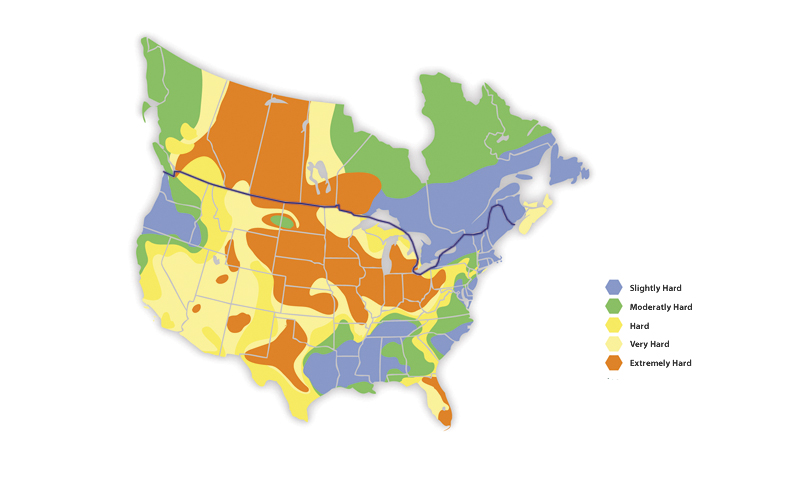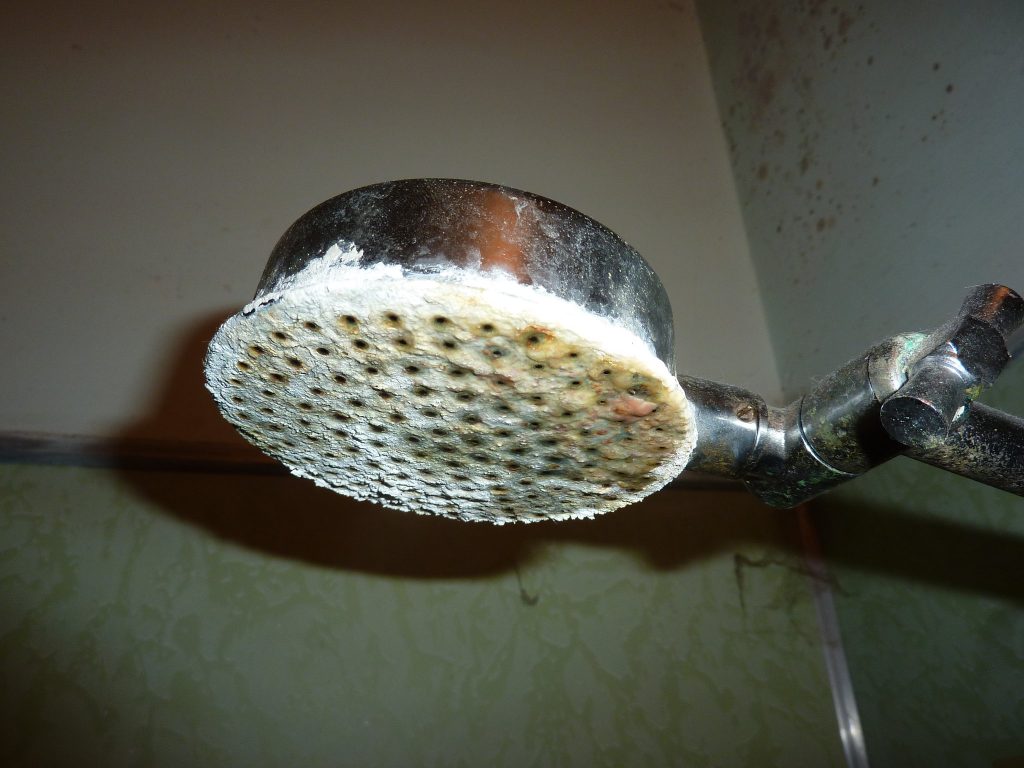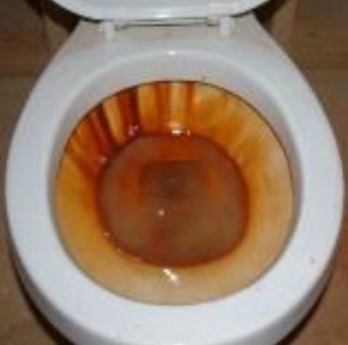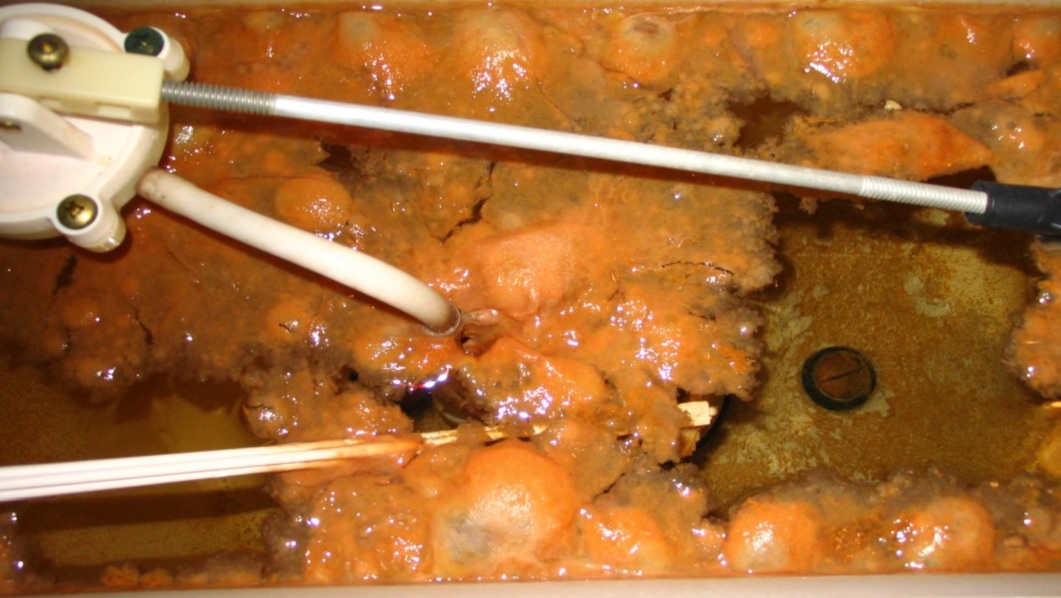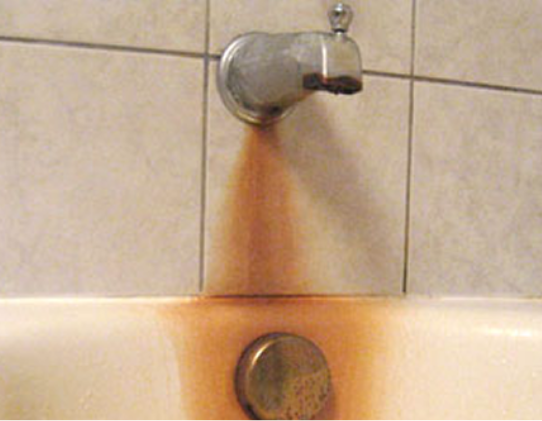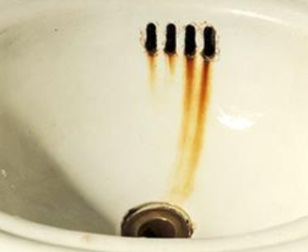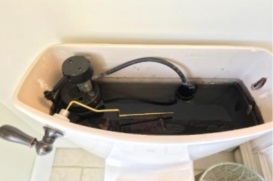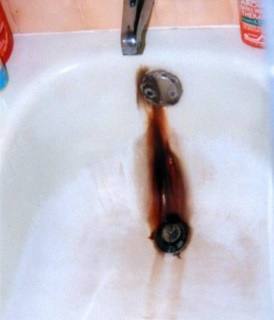Water from your tap can look, smell, and taste just fine. However, it might be carrying minerals like calcium and magnesium, or contaminants like chlorine or lead. Pristine Water Solutions can diagnose these common water problems and help provide you with the best solution.
Take a look
Below are nine common water problems. Select the water problems you might be experiencing by clicking on the applicable icon. See if you notice any of the symptoms around your home. Learn the cause of these common water problems. And see the potential solution Pristine Water may have to make these problems go away. If you’re looking for The Ultimate Solution to solve all these problems, our MaxPack has you covered.
Hard Water
Symptoms: Water spots and stains on dishes and shower walls. Scale build-up on water-based appliances and fixtures like hot water tanks, dish washers, and faucets. Rings around the tub. Clothes appear gray and dull. (Click photos below to enlarge)
Cause: Dissolved minerals in water, primarily calcium and magnesium.
Other: Virtually all water in Manitoba and NW Ontario, including municipal water (yes, even Winnipeg!), is hard.
Solution: WaterMax
Taste & Odour: Chlorine
Symptoms: Chemically smell. Can have adverse effects on skin and hair. Potential other health concerns.
Cause: Chlorine is the most cost-effective method for large-scale treatment of municipal supplies. While it kills most pathogens to make drinking water potable, once it arrives at a property’s water main, it serves little purpose.
Solution: Depending upon the concentration added to the municipal water supply, WaterMax (up to 3 ppm), H3500 Reverse Osmosis, or the combination of the two (MaxPack).
Taste & Odour: Iron
Types: Three different types, none of which are a health hazard:
- Clear water iron (ferrous). Water from tap is clear.
- Red water iron (ferric). Water from tap is stained (yellowy rust)
- Iron bacteria
Symptoms: Rusty, yellow, or brown/black-coloured stains on sinks, toilets, showers, and laundry. Water can taste metallic. Iron bacteria is most evident as rust-coloured clumps in toilet tanks. (Click to enlarge photos below)
Cause: When iron in water is present at 0.3 ppm or more. Iron bacteria can thrive in iron-rich water.
Solutions: WaterMax water softener (up to 1.0 ppm of total iron); Hague Specialty Iron Filter required if total iron > 1.0 ppm or even at lower iron levels depending on other water characteristics. Presence of iron bacteria may require the addition of a specialty filter along with a Hague Ozone Generator.
Taste & Odour: Sulphur
Symptoms: The telltale smell of “rotten eggs”. Can turn copper plumbing lines black.
Cause: Some water supplies contain dissolved hydrogen sulphide gas.
Solution: Results will depend upon other water characteristics. WaterMax and/or Hague Specialty Sulphur Filter up to 5.0 ppm.
Contaminant: Manganese
Symptoms: Black stains on plumbing fixtures and laundry. NOTE: Manganese has been found to have potential adverse effects on neurological development and behaviour, including deficits in memory, attention, and motor skills, especially in infants. As a result, Health Canada has placed a Maximum Acceptable Level (MAC) of 0.12 mg/L.
Cause: Some water supplies contain dissolved hydrogen sulphide gas.
Solution: WaterMax or Hague Specialty Iron Filter depending upon the level of manganese and accompanying iron and other water characteristics.
Contaminant: Fluoride
Symptoms: None that are noticeable or evident. Possible dental fluorosis with extremely high exposure.
Cause: While it does occur in nature, like chlorine, its presence is most common in municipal water supplies where it is added to promote dental health.
Solution: Not everyone is concerned about the potential health effects of fluoride. Should you want fluoride removed, the best way is with the H3500 Reverse Osmosis system.
Contaminant: Nitrates/Nitrites
Symptoms: Undetectable in water without a water test. NOTE: Nitrates and Nitrites have been found to have potential adverse and life-threatening effects on thyroid gland function in infants, causing blue baby syndrome. As a result, Health Canada has placed a Maximum Acceptable Level (MAC) of 45.0 mg/L for nitrates and 3.0 mg/L for nitrites.
Cause: While it does occur in nature, much of it appears in wells in agricultural areas due to leaching and runoff from fertilizer use and domestic sewage.
Solution: H3500 Reverse Osmosis System, WaterMax, or MaxPack
Contaminant: Other Toxic Metals
Symptoms: Often undetectable in water without a water test done by a certified lab. These metals include arsenic, barium, lead, radium, and cadmium and have been found to be detrimental to human health.
Cause: Most of these metals exist in nature and may find their way into a water supply naturally. Other potential sources may include existing water distribution and plumbing systems (lead) and industrial waste.
Solution: H3500 Reverse Osmosis System
Contaminant: Acidic/Low pH
Symptoms: Water with a low pH level is also know as acid water. It will often have a metallic taste. Acid water can cause damage to sinks, faucets, hot water tanks, and drainage and supply lines. It can be particularly damaging to copper pipes, causing them to turn a bluish colour and to leach excess copper into the water supply. Excess copper can cause serious health issues, including kidney and liver damage.
Cause: Acid water can be naturally occurring. It may also be the sign of other contaminants in your water supply. A test for low pH may require further testing of the water supply at a certified lab.
Solution: WaterMax

